5-Fluorouracil disrupts skeletal muscle immune cells and impairs skeletal muscle repair and remodeling
- PMID: 36007896
- PMCID: PMC9529268
- DOI: 10.1152/japplphysiol.00325.2022
5-Fluorouracil disrupts skeletal muscle immune cells and impairs skeletal muscle repair and remodeling
Abstract
5-Fluorouracil (5FU) remains a first-line chemotherapeutic for several cancers despite its established adverse side effects. Reduced blood counts with cytotoxic chemotherapies not only expose patients to infection and fatigue, but can disrupt tissue repair and remodeling, leading to lasting functional deficits. We sought to characterize the impact of 5FU-induced leukopenia on skeletal muscle in the context of remodeling. First, C57BL/6 mice were subjected to multiple dosing cycles of 5FU and skeletal muscle immune cells were assessed. Second, mice given 1 cycle of 5FU were subjected to 1.2% BaCl2 intramuscularly to induce muscle damage. One cycle of 5FU induced significant body weight loss, but only three dosing cycles of 5FU induced skeletal muscle mass loss. One cycle of 5FU reduced skeletal muscle CD45+ immune cells with a particular loss of infiltrating CD11b+Ly6cHi monocytes. Although CD45+ cells returned following three cycles, CD11b+CD68+ macrophages were reduced with three cycles and remained suppressed at 1 mo following 5FU administration. One cycle of 5FU blocked the increase in CD45+ immune cells 4 days following BaCl2; however, there was a dramatic increase in CD11b+Ly6g+ neutrophils and a loss of CD11b+Ly6cHi monocytes in damaged muscle with 5FU compared with PBS. These perturbations resulted in increased collagen production 14 and 28 days following BaCl2 and a reduction in centralized nuclei and myofibrillar cross-sectional area compared with PBS. Together, these results demonstrate that cytotoxic 5FU impairs muscle damage repair and remodeling concomitant with a loss of immune cells that persists beyond the cessation of treatment.NEW & NOTEWORTHY We examined the common chemotherapeutic 5-fluorouracil's (5FU) impact on skeletal muscle immune cells and skeletal muscle repair. 5FU monotherapy decreased body weight and muscle mass, and perturbed skeletal muscle immune cells. In addition, 5FU decreased skeletal muscle immune cells and impaired infiltration following damage contributing to disrupted muscle repair. Our results demonstrate 5FU's impact on skeletal muscle and provide a potential explanation for why some patients may be unable to properly repair damaged tissue.
Keywords: chemotherapy; macrophages; monocytes; muscle repair; skeletal muscle.
Conflict of interest statement
No conflicts of interest, financial or otherwise, are declared by the authors.
Figures

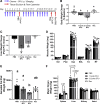

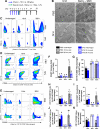
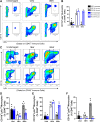

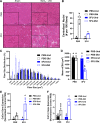
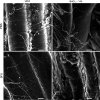
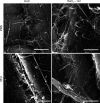
References
-
- Ma WW, Saif MW, El-Rayes BF, Fakih MG, Cartwright TH, Posey JA, King TR, von Borstel RW, Bamat MK. Emergency use of uridine triacetate for the prevention and treatment of life-threatening 5-fluorouracil and capecitabine toxicity. Cancer 123: 345–356, 2017. doi:10.1002/cncr.30321. - DOI - PMC - PubMed
-
- Benson AB, Venook AP, Al-Hawary MM, Arain MA, Chen Y-J, Ciombor KK, Cohen S, Cooper HS, Deming D, Farkas L, Garrido-Laguna I, Grem JL, Gunn A, Hecht JR, Hoffe S, Hubbard J, Hunt S, Johung KL, Kirilcuk N, Krishnamurthi S, Messersmith WA, Meyerhardt J, Miller ED, Mulcahy MF, Nurkin S, Overman MJ, Parikh A, Patel H, Pedersen K, Saltz L. Colon cancer, Version 2.2021, NCCN clinical practice guidelines in oncology. J Natl Compr Canc Netw 19: 329–359, 2021. doi:10.6004/jnccn.2021.0012. - DOI - PubMed
Publication types
MeSH terms
Substances
Associated data
Grants and funding
LinkOut - more resources
Full Text Sources
Other Literature Sources
Research Materials
Miscellaneous

